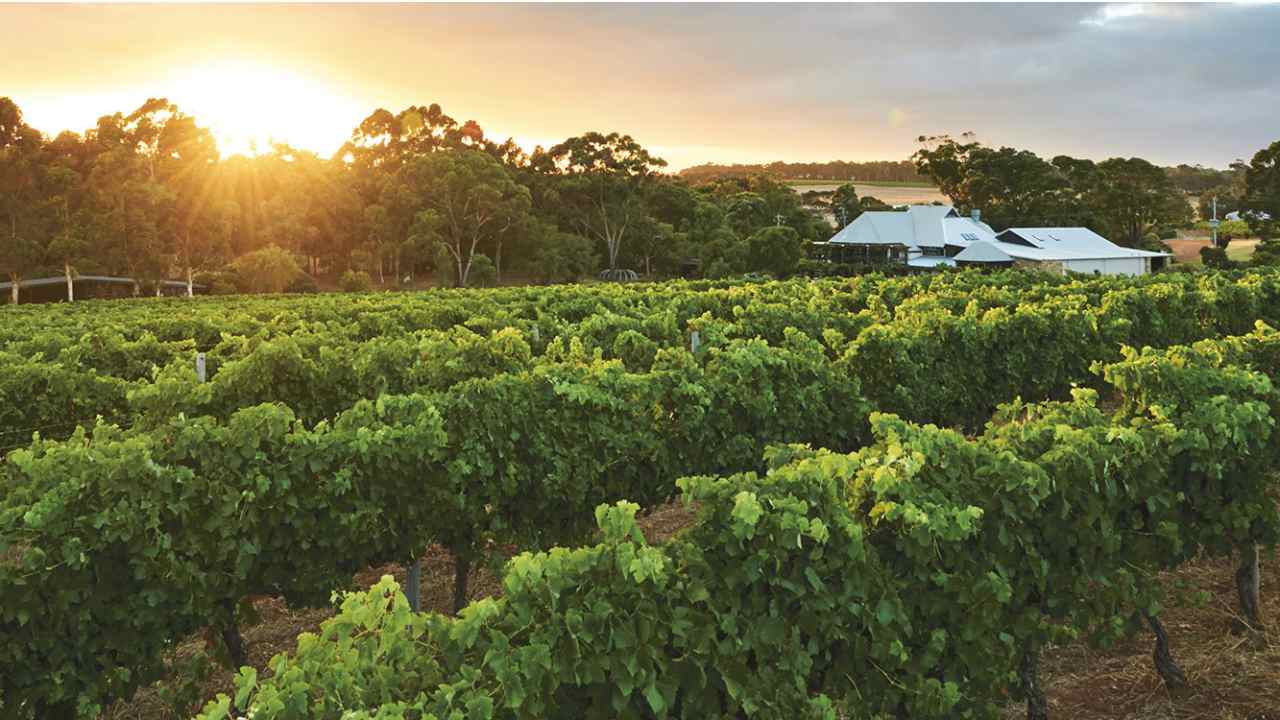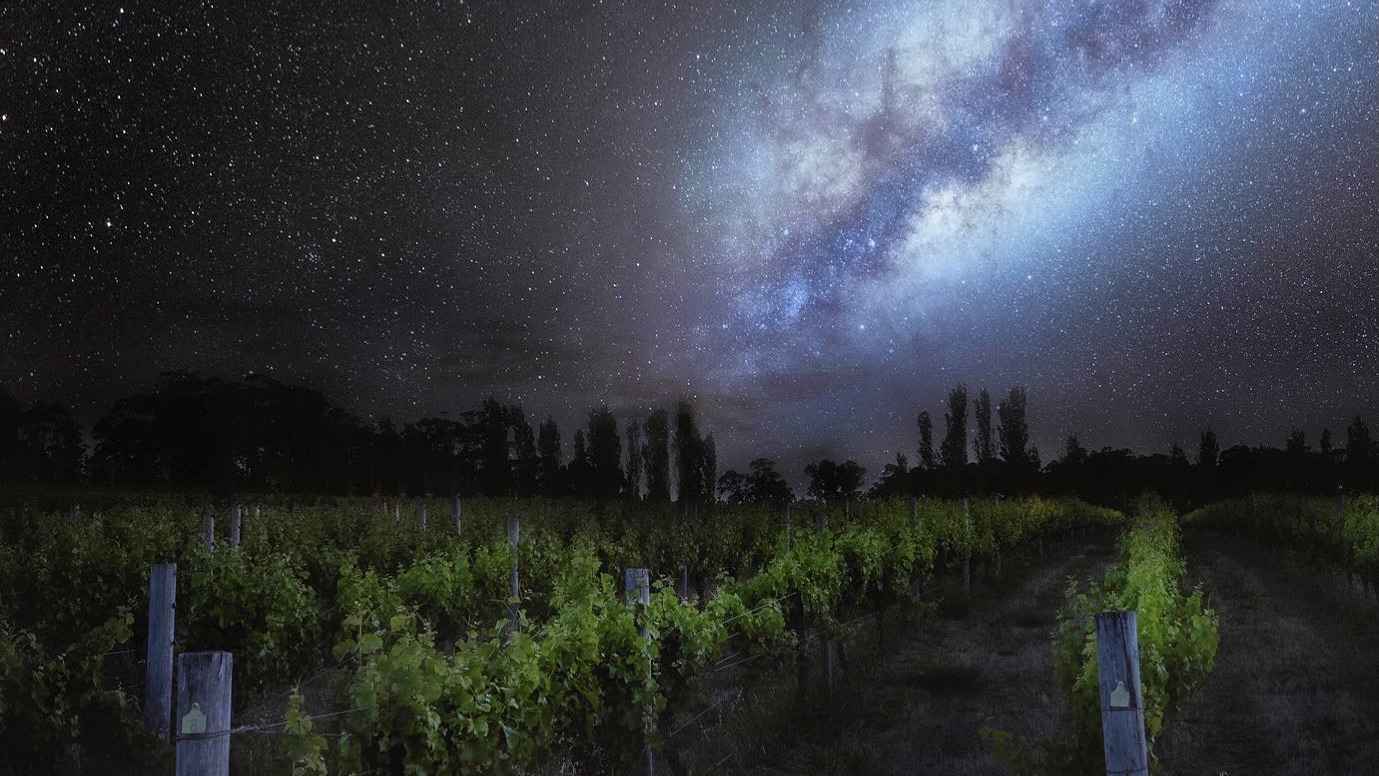Winemaking
Winemakers transport us to their wineries and vineyards to explain how terroir and winemaking create these unique wines.
Dive deep into Margaret River’s most important grape varieties and learn what makes these grape varieties unique in both the vineyard and the winery.
Cabernet Sauvignon
Cabernet Sauvignon is Margaret River's flagship and most planted grape variety. The intense yet refined aromas of cassis, blackberry, mint, and tobacco, along with a powerful yet elegant structure, make Cabernet Sauvignon from Margaret River some of the finest in Australia.
We spoke to Tim Lovett, the winemaker of Leeuwin Estate, one of the first wineries to plant Cabernet Sauvignon. Their most famous wine is the Art Series Cabernet Sauvignon, which is on par with many top estates in Bordeaux.

What about the terroir of Margaret River makes it a perfect setting to create world-class Cabernet Sauvignon?
"Margaret River is one of the most unique and isolated wine regions in the world. Bordered by three sides of water, we are located in the far south-west corner of Western Australia.
The Indian and Southern oceans inherently create a maritime influence within a Mediterranean climate. There is great synergy and correlation between Margaret River and Bordeaux based on three pillars:
Firstly, free-draining soils – our soils are lateritic iron-rich gravel, which arose from pre-Cambrian bedrock 750 million years ago, which have clay subsoil 1-1.5m depth .
Secondly, the maritime influence of the Indian and Southern Oceans, mimic that of the Gironde River and Atlantic ocean.
Thirdly, our heat summation is that in symmetry to Bordeaux, however just a touch warmer. Cabernet Sauvignon from Margaret River are expressive of both density and concentration of dark black fruits with an incredible aromatic profile in harmony. Perfume meets dark fruits.”
What do you do in the vineyard and the winery to produce such high quality Cabernet?
“The first plantings of Leeuwin Estate Cabernet Sauvignon occurred in 1975. The specific sites were chosen based upon their soil profile, aspect and positioning. The basis on Art Series Cabernet parcels arise from a dry grown practice, whereby smaller berries are formed, expressing greater physiological tannin ripeness.
All the color, tannins and inherent flavor are embedded within the skins. Greater skin to juice ratio breathes and translates site, variety and clone.
The most important aspect about the Art Series Cabernet in Margaret River is the meticulous detail in the vineyard. Great wines are born in the vineyard, and not made. The attention in each vineyard, regarding leaf removal through the canopy and fruit yield per vine, allows solarisation to the fruit zone, which is pivotal in achieving our mission and vision.
Threaded through that, as a winemaking team we are the architects to nurture, preserve and respect the fruit that we receive. Allowing density and concentration meeting in symmetry with a fragrant aromatic profile and graphite, mineral acid structure.”
If you had to describe Margaret River Cabernet Sauvignon to someone in one sentence, what would you say?
“Margaret River Cabernet Sauvignon is so expressive and utterly alluring, dark core of black fruits greet sophisticated aromatics and floral complexity, it is built upon its maritime location - its remoteness, passionate wines begin with the soil and environment, and are allowed to unfold in the winery and unravel with longevity in the bottle.”
Chardonnay
Chardonnay can be ripe and full-bodied, or it can lean and austere. Finding the perfect balance between these styles is rare, but Margaret River Chardonnay is just that. Often compared to Burgundy, these wines can age with grace and give flavors of white peach, sea salt, and subtle toastiness from oak.
We spoke to renowned winemaker Virginia Willcock at Vasse Felix, established in 1967, one of the first in the region.

What about the terroir in Margaret River makes it a perfect setting to create world-class Chardonnay?
“Margaret River is a truly unique place, due to its pristine environment (one of the world's biodiversity hotspots), its ancient geology and soils, its Mediterranean climate and the maritime influence of the vast ocean that surrounds three sides of the region.
Margaret River, given all these qualities, behaves much more like cool climate than most people can get their heads around given its maritime location. Perhaps the most important dimension of Margaret River's climate is its maritime influence.
The Indian Ocean brings a daily sea breeze, fresh off the expansive west coast each afternoon during the growing season, which acts like an air-conditioner on the grapes, enabling them maximum time on vine to ripen to full physiological balance and flavor, while maintaining excellent natural acidity, elegance and finesse.
The prime viticultural soils are ironstone gravel loam over clay, they are tough soils that are ideal for fine wine viticulture and provide low yields of immense concentration.
The soils do vary over small sections of land, which, for a site-expressive variety, like Chardonnay, is very exciting, as tiny plots can provide all sorts of fascinating characters, which as single expressions, or combined, bring layers of attractive complexities to the wines.”
What do you do in the vineyard and the winery to produce such high quality Chardonnay?
“Our approach to Chardonnay is about allowing the fruit to take center stage in driving the style of the wine.
Our viticulture program is organic (NASAA certified) which enables the purest form of grape growing. We focus primarily on Western Australia's unique heritage clone, Gingin, which is known for its power, structure and body, and we also incorporate some Bernard clones for their softness and finesse.
We have paired these to the best plots of clay infused, sandy gravel loams in our vineyard, as they tend to prefer the slightly more clay infused topsoils which hold some moisture and are found in the lower sections of our vineyard slopes.
From a winemaking point of view, it's a very minimal approach, and has been for over a decade. We ferment each small section as unclarified free run juice in French oak barriques, using only the natural yeasts that grow with our grapes in the vineyard.
This enables us to capture the maximum environmental character that comes from the plots in our vineyard. Each classified plot is vinified separately and then final assemblage is post-maturation.”
If you had to describe Margaret River Chardonnay to someone in one sentence, what would you say?
“Fruit power with elegance, persistence, incredible structure and endlessly captivating estate character.”
Semillon and Sauvignon Blanc Blends
This classic blend, originating from Bordeaux, has all the aromatics and freshness of Sauvignon Blanc, combined with the body and texture of Semillon. Depending on how these grapes are blended and the style it's made in, you can find fun and easy drinking styles to more oaked and full-bodied styles meant for aging.
We spoke to winemaker Vanessa Carson at Lenton Brae, who's worked in Margaret River since 1982.

What about the terroir in Margaret River makes it a perfect setting to create world-class Semillon and Sauvignon Blanc blends?
“Well drained, gravel loam soils provide the perfect growing conditions for the Semillon and Sauvignon Blanc varietals. We enjoy a maritime influence at our vineyard, being just 3.5km from the ocean and this provides consistency of quality growing conditions.
These two varietals together account for 34% of the grape production in Margaret River as the growing conditions have been proven to be perfectly suited.”
What do you do in the vineyard and the winery to produce such high quality Sem/Sauv Blends?
“Site specific vineyard management is crucial for high quality yields and ensures slow, long and consistent ripening - ideal for Semillon and Sauvignon Blanc.
Our well-drained Mungite and Forest Grove soils with a gravel in the profile are perfectly suited for Sem/Sauv. Good yields can be supported on the better Mungite soils due to good water and nutrient holding capacities. Organic fertilizers are used twice a year, making sure the crop levels are maintained and the vines have all they require for peak health.”
If you had to describe Margaret River Semillon and Sauvignon Blends to someone in one sentence, what would you say?
“Semillon and Sauvignon Blanc have a natural synergy, they are crisp and aromatic with the textural complexity of the Semillon perfectly balancing the fruitiness of Sauvignon Blanc and the Margaret River region and the sub-region of Wilyabrup provides the perfect environment for this relationship.”
Shiraz
Though Australia's most planted grape, Shiraz takes a bit of a backseat to Cabernet Sauvignon in Margaret River. Margaret River produces elegant and peppery styles of Shiraz, often labeled as Syrah, to differentiate them from the bigger, bolder Shiraz we see in other parts of Australia.
We spoke to Luke Jolliffe, winemaker at Stella Bella, to find out what makes Margaret River Shiraz different from the rest of Australia.

What about the terroir in Margaret River makes it a perfect setting to create world-class Shiraz?
“For me, it’s the free draining Forest Grove gravelly loams combining with the cooler conditions in Southern Margaret River that are most suited to Shiraz.
On these soils we have low vigor and great fruit exposure which achieve tannin ripeness in the stems (for whole bunch inclusion), skins and seeds. Combining this with low rainfall during ripening, ample sunlight hours, cool winds off the Indian and Southern oceans we obtain subtle spice and intense fruit purity.”
What do you do in the vineyard and the winery to produce such high quality Shiraz?
“As much as we possibly can! In the vineyard we prefer spur pruning in Shiraz to help with canopy management, from there it's all the cultural practices; shoot thinning, removing lateral shoots, leaf plucking the morning side of the canopy in a strict VSP trellis system and hand picking of course.
In the winery we use whole bunch inclusion, hot fermentation, and a maximum of 7-9 days on skins. 15-20% new oak (all French) and 10 months in oak.”
If you had to describe Margaret River Shiraz to someone in one sentence, what would you say?
“For Southern Margaret River: Medium bodied deliciousness with a hint of black pepper spice, an abundance of red fruit, and some individuality from a thoughtful maker.”